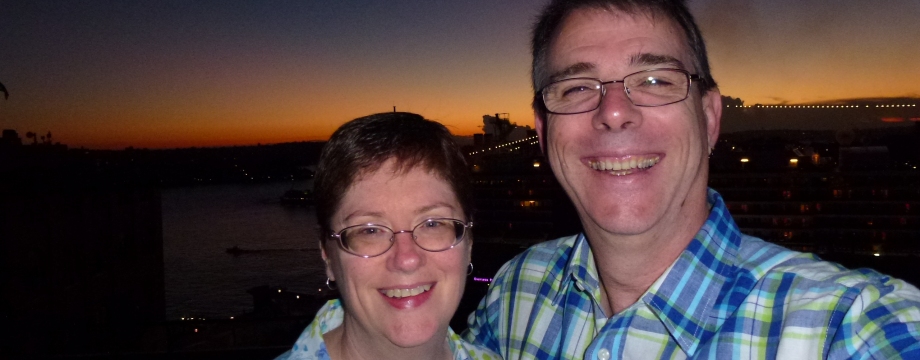One of many reasons for visiting Provence is that it is a varied collection of villages spread over quite a large geographical area. There is little in the way of regular public transport in most of the villages so, realistically, the only way to explore would be via personal transport (car, motorbike or bicycle). We have actually seen a lot of cyclists, fully kitted out with bulging panniers, labouring up and down the hills of Provence – had we been younger and fitter, we still (prolly) would have opted for a car, but the slower pace of a bike would let you stop in all the places that had amazing views but no pull-over for cars.
Over a two day period we explored the Luberon region, first going south then north.
Heading into Southern Luberon, we aimed the VDub at a lovely little village called Cucuron. Jo, in her extensive research, had discovered most villages have market days regularly where producers can bring local produce out for sale. Cucuron’s markets were set out around a central pond and public square, and we were after veg for meals later in the week, and lunch makings for a picnic.
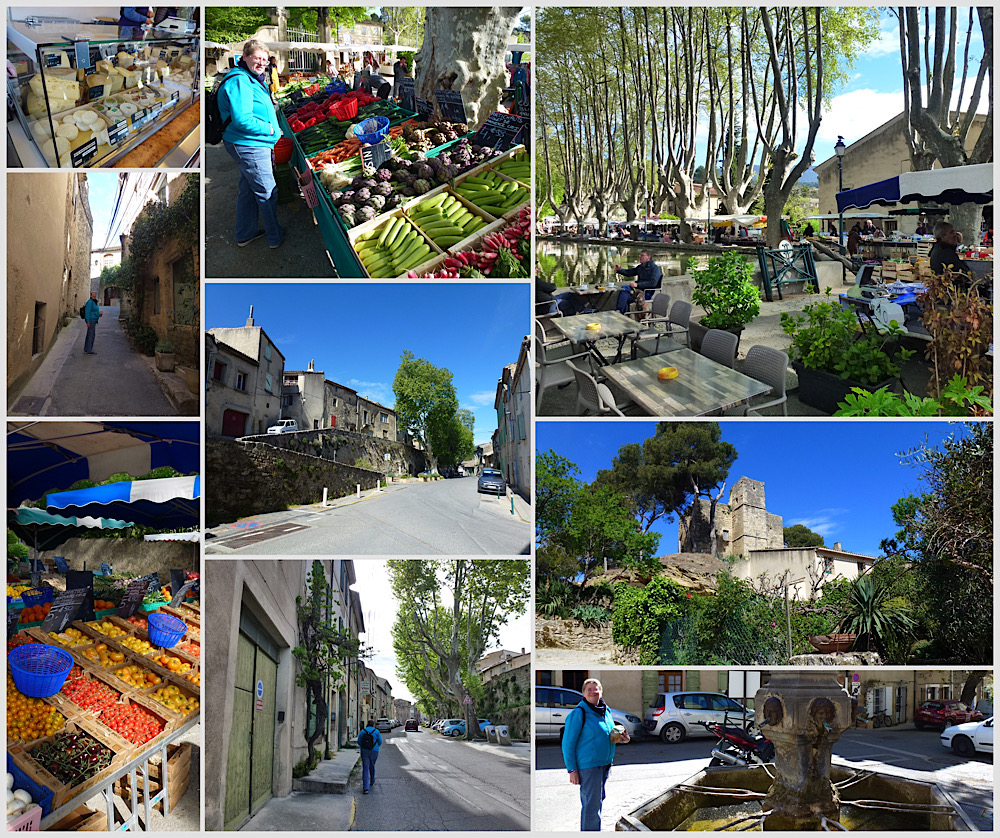
We bought a baguette from the local Boulanger, and a couple of St. Marcellain cheeses, another punnet of delicious strawberries and some fresh fruit and veg, packed it away and explored the town a little. We walked up the hill to a little church, got lost in some of the winding streets and then returned to the free car park, just outside the town.
Our next stop was Pont Julien, an astonishing Roman bridge that spanned a river. It was Anzac Day, the road verges and fields around us were bejeweled with poppies, little wonder the poppy has endured as a symbol of remembrance. We picnicked in the warm sun, sitting on lush grass surrounded by wildflowers – heaven.
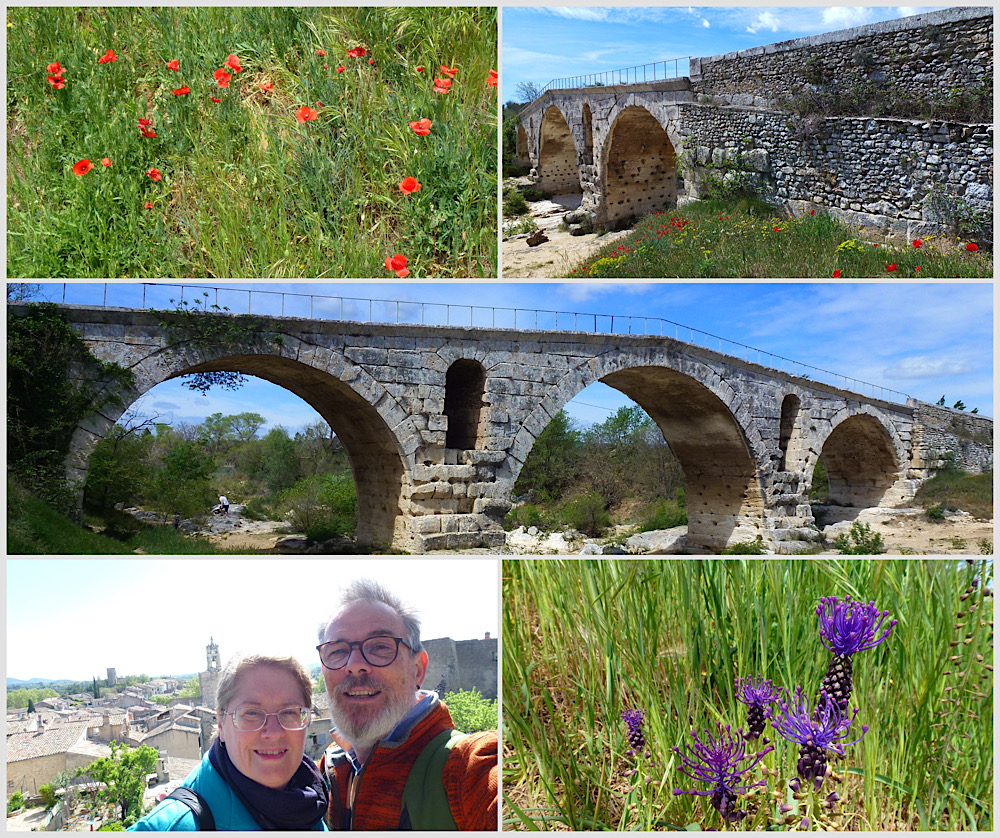
Exploring the bridge further, we noticed it had become the main path for cyclists in this part of Provence, so much infrastructure exists here for cycling. You can see clearly a number of phases of building, with the original Roman foundations still clearly visible, great engineering indeed (yes, but what have the Romans ever done for us….).
Suitably lunched, we pointed the VDub towards the hills and a hilltop township called St Cecile. We parked and walked up a little towards the town, then onto the “Grape and Olive” walk, a rambling path that wended through olive orchards and fields of grape vines. We trudged up hill, down dale, along wooded paths, beside crumbling ancient walls and ended up (through either missing a turn or buggering up our directions somehow) miles from our car. The map showed it as a circuit…. Our Fitbits congratulated us on another record step count but we were a little done in by the time we dragged ourselves back up the hill to the car.
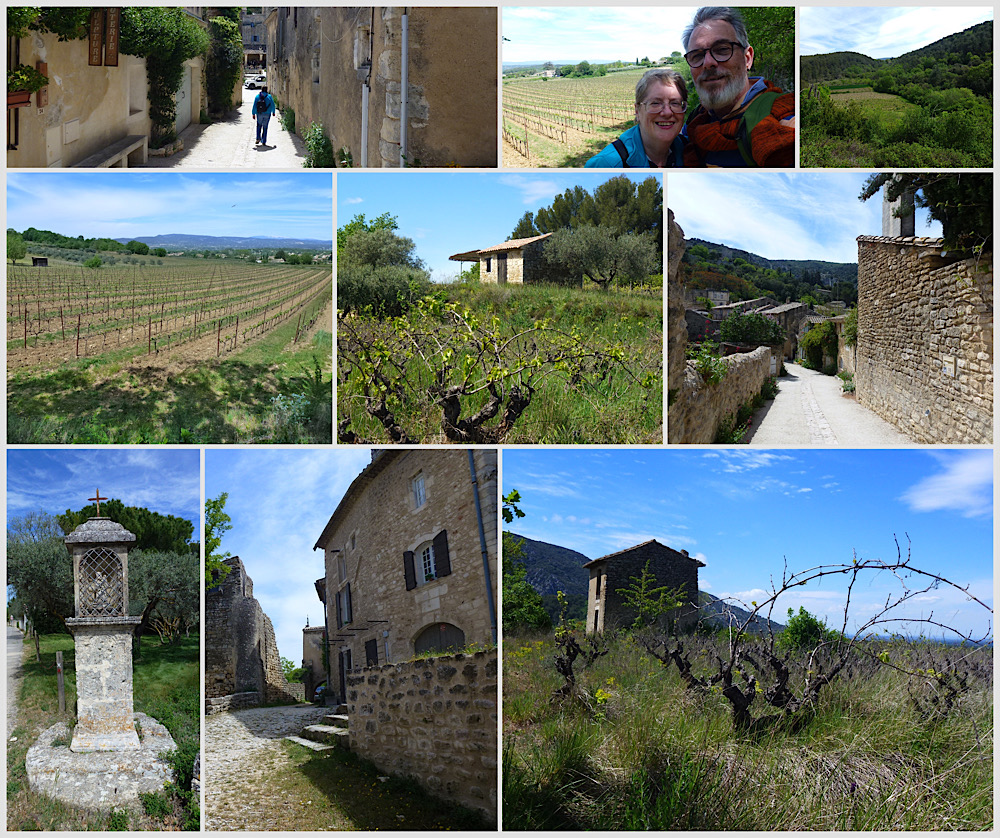
After rest and rehydration we pointed the car homewards, wending through lush and spectacular scenery. Tea and a good lie down when we got home refreshed us suitably for a posh dinner out. Jo had made a reservation at Le Pre Gourmand, 175 avenue Marx Dormoy. The food and wine were superb: Jo started with a tarte of langoustine and lamb backstrap for main, I had asparagus with trout then veal for main. The meal was punctuated with other treats from the chef including our first try of sea urchin. Such a delicious dinner, premium produce in season, a memorable meal.
The next day we headed towards Northern Luberon to the mountainous region of Les Apt to a town called St Saturnin. Jo had found a guided walk that took us up an ancient ridge above the modern township, past a number of old stone windmills and on to the remains of a stone fort, settlement and church perched high on a thin ridge. We walked across an ancient dam wall (empty but it looked like it could still hold water) perched high up in a crevice above the existing township, then across to the defensive walls and up to the ruins. Although hilly, the walk was well marked and the scenery stunning. We chose a different path back down to the township for a little rest before driving on.
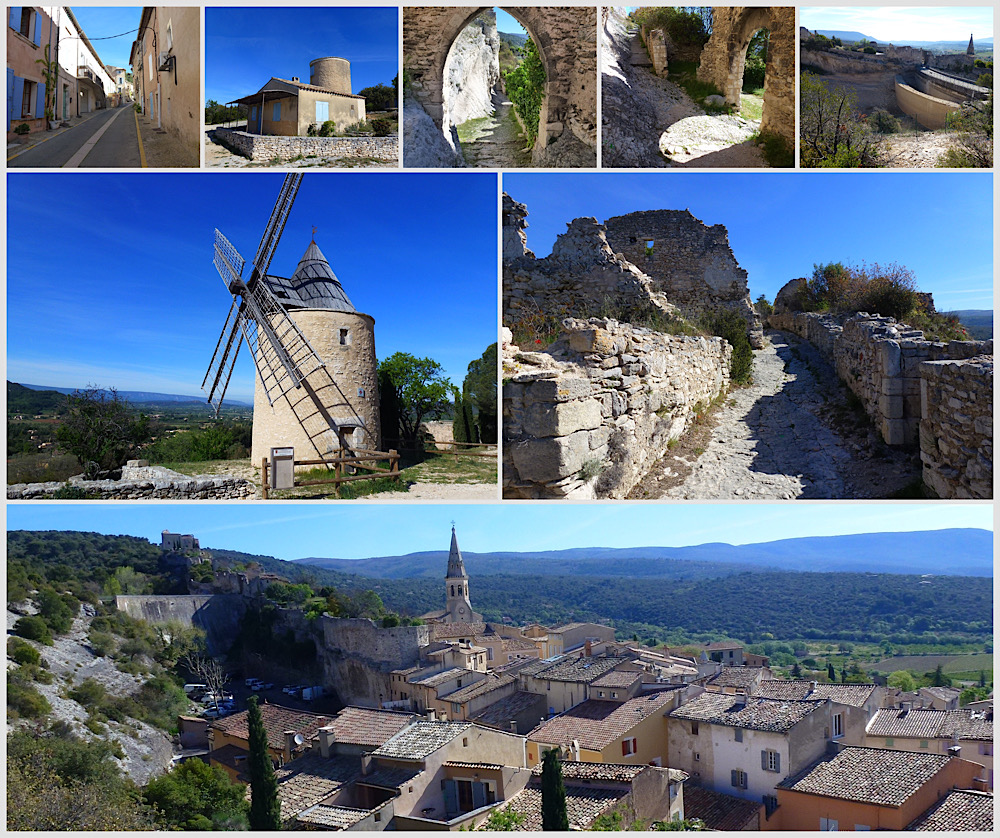
Next we headed to Roussillon, another village perched on a ridge, parked and sought out caffeine. Suitably refreshed we then went further up the hill and purchased tickets for the “Ochre Path”, a curious geological anomaly that sees minerals surfacing in the sandstone cliffs as strong coloured ochres, mostly earthy tones from white, through yellows to reds, oranges and blacks.
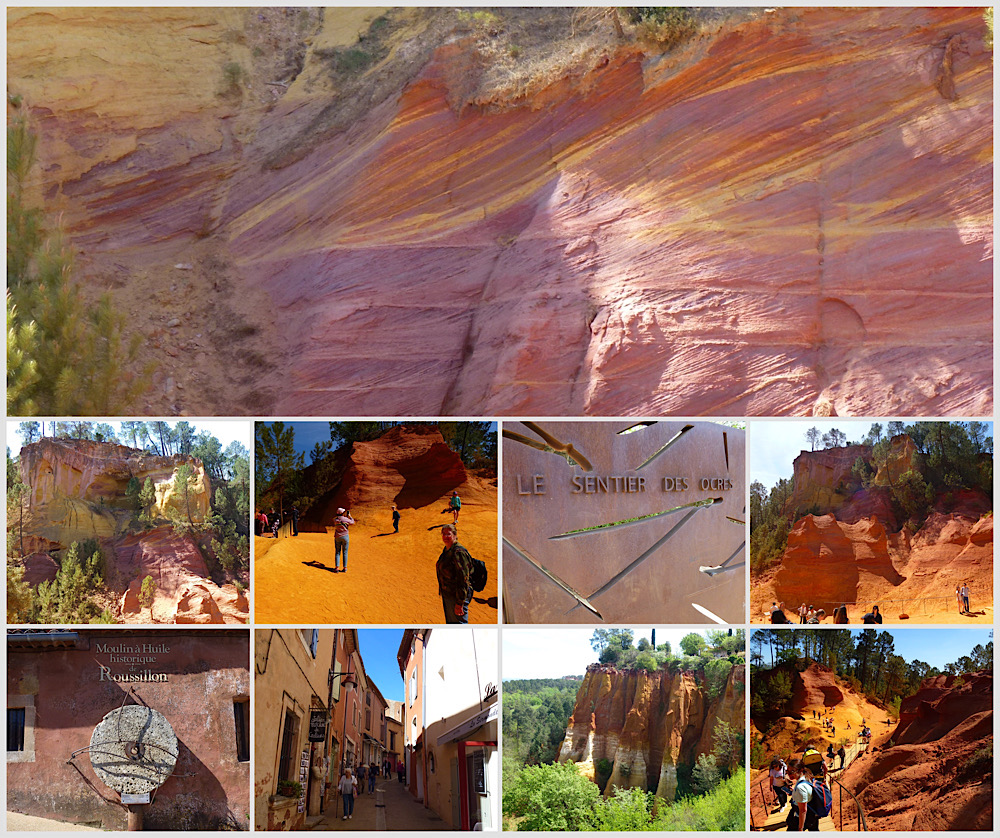
It seems, for centuries, here ochres have been sought out and used as colourfast pigments for plaster, paints and other things. We could have bought bottles of pure colours supposedly collected locally (my guess is not much local collection now happens as the patches of vibrant colour attract tourist dollars). It reminded me a little of the coloured sands on the Sunny Coast, except in sandstone rock form. The colours in the warm sunshine were vibrant and varied. Needless to say our shoes were powder-coloured for the next couple of days.
After waking the circuit, we settled in the warm sun and had lunch. The day previous we had gone to the local butcher’s in Eyragues and purchased a slice of pork terrine. That morning we purchased a fresh baguette (as you do), so it was terrine and baguette for lunch – a delicious but very rich meal. The French really have mastered charcuterie, and pack so much flavour into their pates, terrines and other meaty goodies.
Suitably lunched, we wended back to the car to discover we were outside phone reception range, but hoped the “offline maps” stored would see us clear to Abbey de Senanque. Sheila the satnav clearly had only a passing grip of where we were and where we were headed, sending us on a perilous trip down lanes and narrow winding roads then a left turn where there was no left turn, but there was a ditch and cliff. Freestyling it I u-turned, the car said no, I had to fight back (seems modern VDubs have steering and brake assist that relies on sensors low to the road, they got spooked and tried to wrestle control from me). We backtracked and found the entrance but that was fairly scary for a while there.
Abbey Notre-Dame de Senanque was founded in 1148 by a breakaway group of Cistercian Monks and, over the years has gradually evolved to the imposing group of buildings it is now. There is still an active community of monks living there but the older parts of the abbey have been opened to the public. Via an Augmented reality iPad, we were shown around as it was and as it is now, with interesting commentary of monk life, facilities and so on.
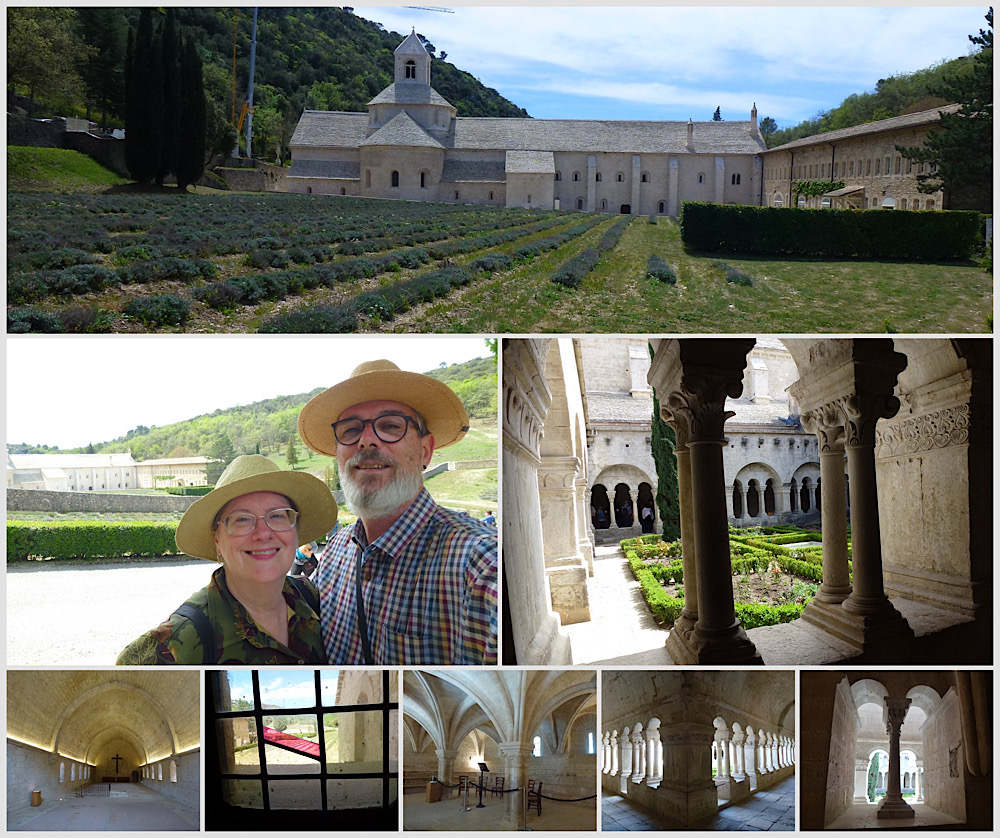
The Abbey is also known for it’s lavender oil and spirit distilling, along with organic honey this forms the basis of the product range available in the extensive gift shop. It was interesting wandering around, seeing parts being restored and others finished. It also had a lovely little cloister, but I am not sure the monks life is for me.
Without phone signal, we set off in what we guessed was the right direction home, with nearly no petrol (at the beginning of the day the VDub said we had nearly 200km of petrol, but as the day progressed this estimate dwindled at an alarming rate). Rounding a hill, we had signal again so Jo set course for the nearest petrol station. We put in 50 euro worth of fuel (which nearly filled it) and then leisurely drove back to home base. When we reached Eyragues we filled the car completely, ready for return.
That night was re-packing for our next leg of the trip, and a rather special asparagus risotto made from produce sourced the previous day, followed by a solid sleep after a full day.
We had a stupid-o’clock train towards Switzerland the next morning, so drove the 20 minutes back to Avignon to return the car at the train station. So ended the Jo&PDub in a VDub portion of our journey and had us say Au Revoir Provence as we headed towards Geneva, our next stop.

